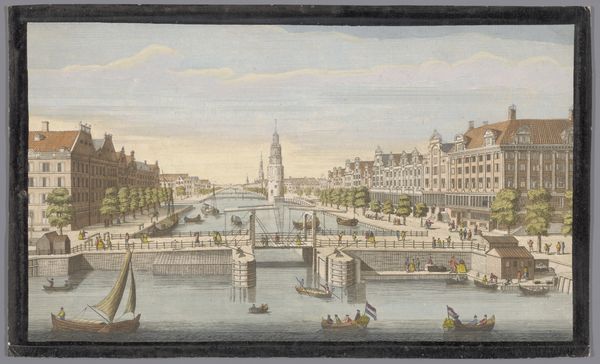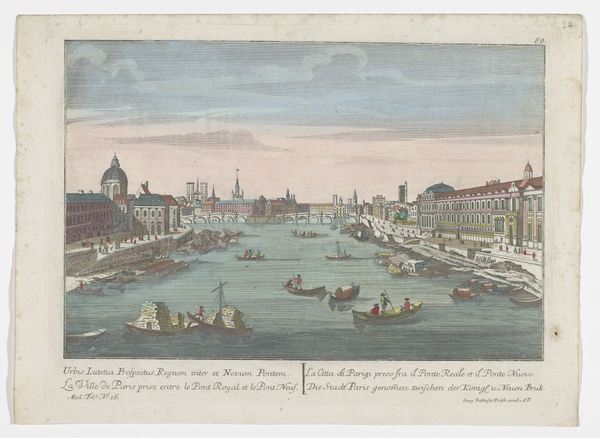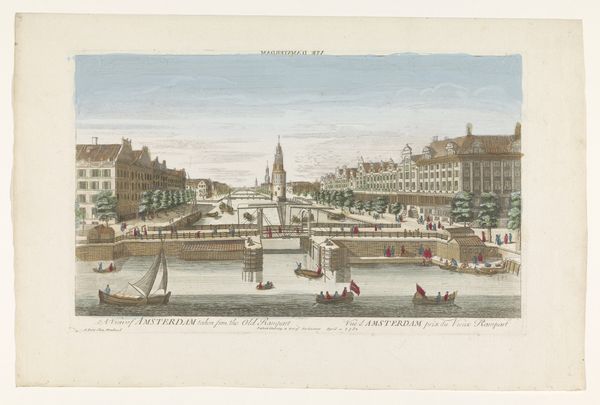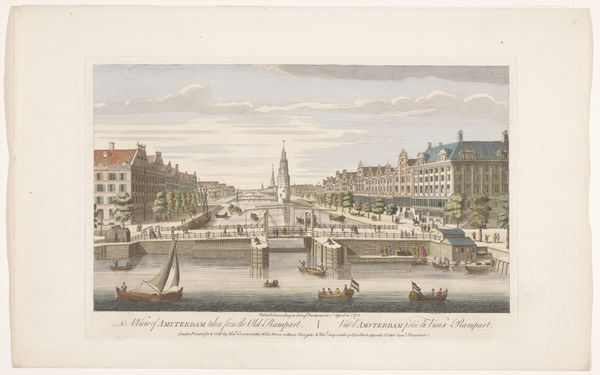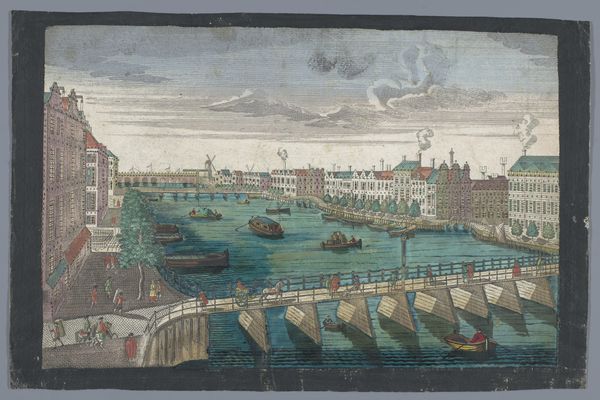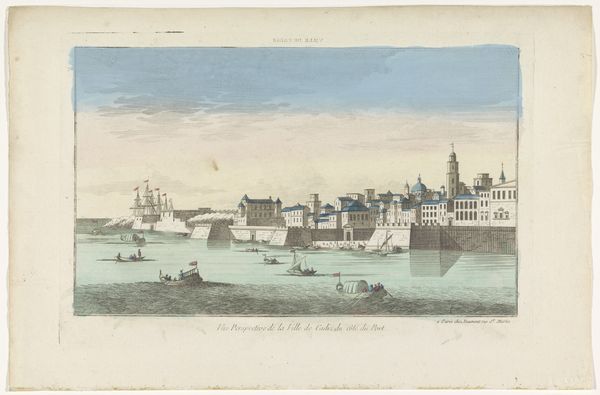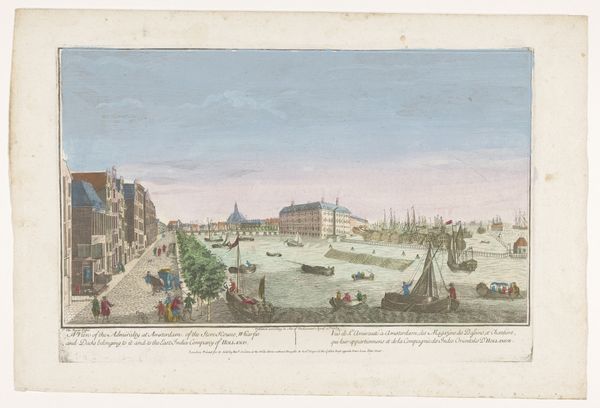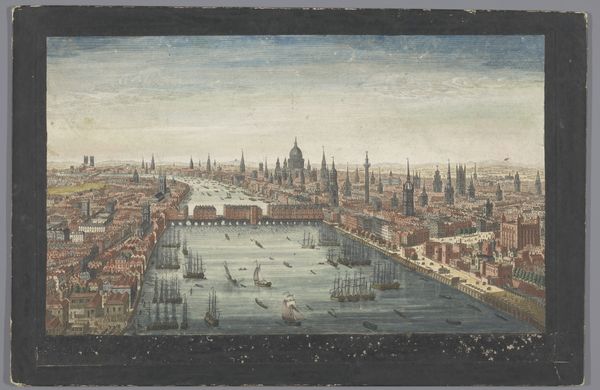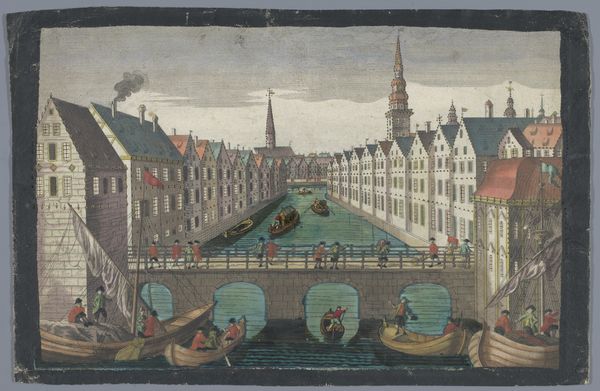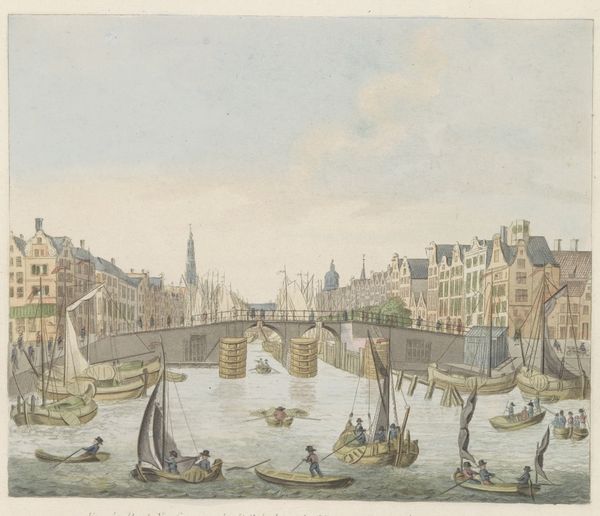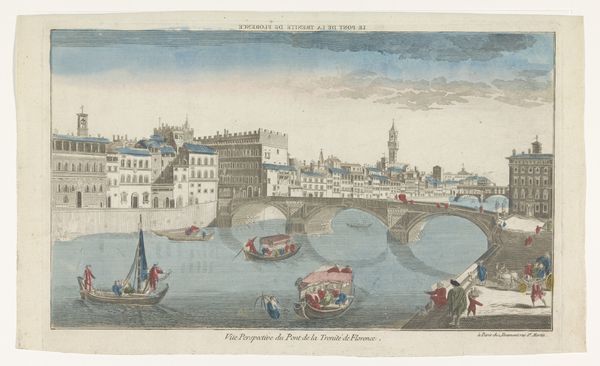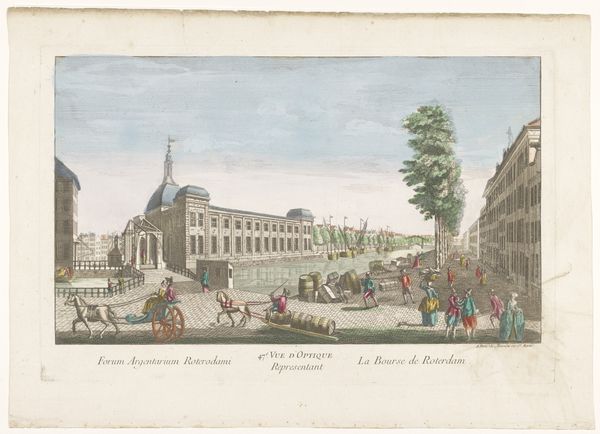
Gezicht op de Oudeschans te Amsterdam gezien vanaf het IJ Possibly 1752 - 1754
0:00
0:00
painting, watercolor
#
dutch-golden-age
#
painting
#
landscape
#
watercolor
#
coloured pencil
#
cityscape
#
genre-painting
#
watercolor
Dimensions: height 239 mm, width 397 mm
Copyright: Rijks Museum: Open Domain
Curator: What strikes you first about this scene? It depicts a vibrant Amsterdam canal. Editor: It has such a wonderfully tranquil air. The pale blues and greens really evoke that placidness, as though time moves a little slower here, despite the visible activity. Curator: Exactly! What we are observing here is "Gezicht op de Oudeschans te Amsterdam gezien vanaf het IJ", or, in English, "View of the Oudeschans in Amsterdam from the IJ," tentatively dated between 1752 and 1754 and attributed to Robert Sayer. It's currently housed right here at the Rijksmuseum. It uses watercolour and coloured pencil in its creation, but does it convey something more to you? Editor: Yes, besides the clear illustration of Golden Age Dutch cityscape, the symbolic placement of the figures – the crossings and passing boats – gives this image movement, a certain pulse. It's the everydayness made beautiful. How would this view have been received at the time? Curator: As a kind of urban pastoral, I suspect. Remember that the Dutch Republic had become a global trading power by this time. Images like this reinforced the sense of orderly prosperity that defined the Amsterdam identity. The architecture itself almost becomes a character in the story. It tells you so much about a city's economic and social climate, doesn't it? Editor: It absolutely does. Even the soft colouring choice seems strategic – presenting an idealized image of peace and wealth, gently persuasive to any viewer then or now. The very air and mood are like the Dutch Republic's branding! Curator: A very astute observation. And in seeing the remnants of these waterways as they're preserved, and also considering that this same vista became part of global commerce, we can start to wonder if something's been preserved or lost? What happens when our icons are exported to the rest of the world, commodified, commercialised? What of authenticity and representation in art? Editor: All very relevant questions indeed. Robert Sayer gives us more than just a picture-postcard, in this artwork: a reflection on what that means, and has meant, historically. Curator: Indeed. Hopefully our listeners will find something in it too.
Comments
No comments
Be the first to comment and join the conversation on the ultimate creative platform.
